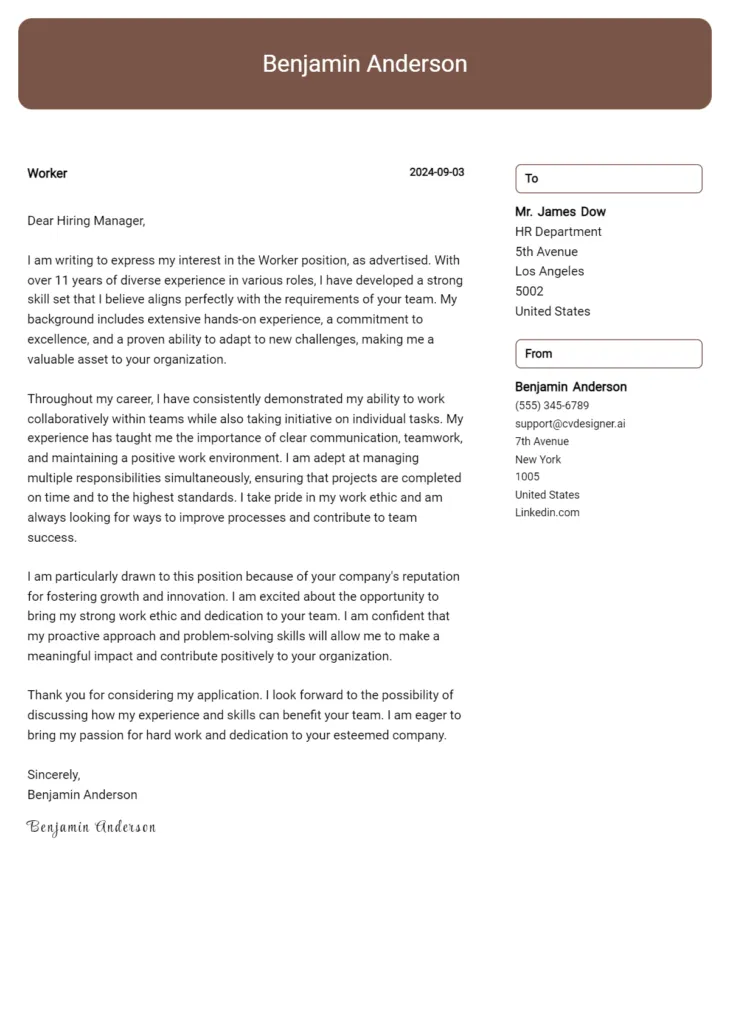Understanding the Importance of a Hard Working Cover Letter
In the competitive landscape of job applications, a hard working cover letter is not just a formality; it’s your first, and often only, chance to make a lasting impression. A well-crafted cover letter demonstrates your genuine interest in the position and the company, showcasing your personality, skills, and enthusiasm in a way that a resume alone cannot. Think of it as your personal introduction, a narrative that complements your resume and encourages the hiring manager to delve deeper into your qualifications. This guide will provide you with the essential knowledge and strategies needed to craft a cover letter that truly stands out and significantly increases your chances of landing an interview. Don’t underestimate the power of a hard working cover letter; it’s your key to unlocking new career opportunities.
What Makes a Cover Letter ‘Hard Working’?
A hard working cover letter goes beyond the basic requirements; it’s a document that reflects thoroughness, dedication, and a proactive approach to the job application process. It shows that you’ve invested time and effort into understanding the specific needs of the role and the company. A truly hard working cover letter is tailored, detailed, and designed to address the specific requirements outlined in the job description. It highlights relevant experiences and skills, illustrating how they directly align with the position’s demands. Furthermore, a hard working cover letter reflects careful research, showing that you understand the company’s mission, values, and culture. This shows your genuine interest. Remember, it’s not just about listing qualifications; it’s about demonstrating how your skills and experiences will contribute to the company’s success.
Highlighting Relevant Skills and Experiences
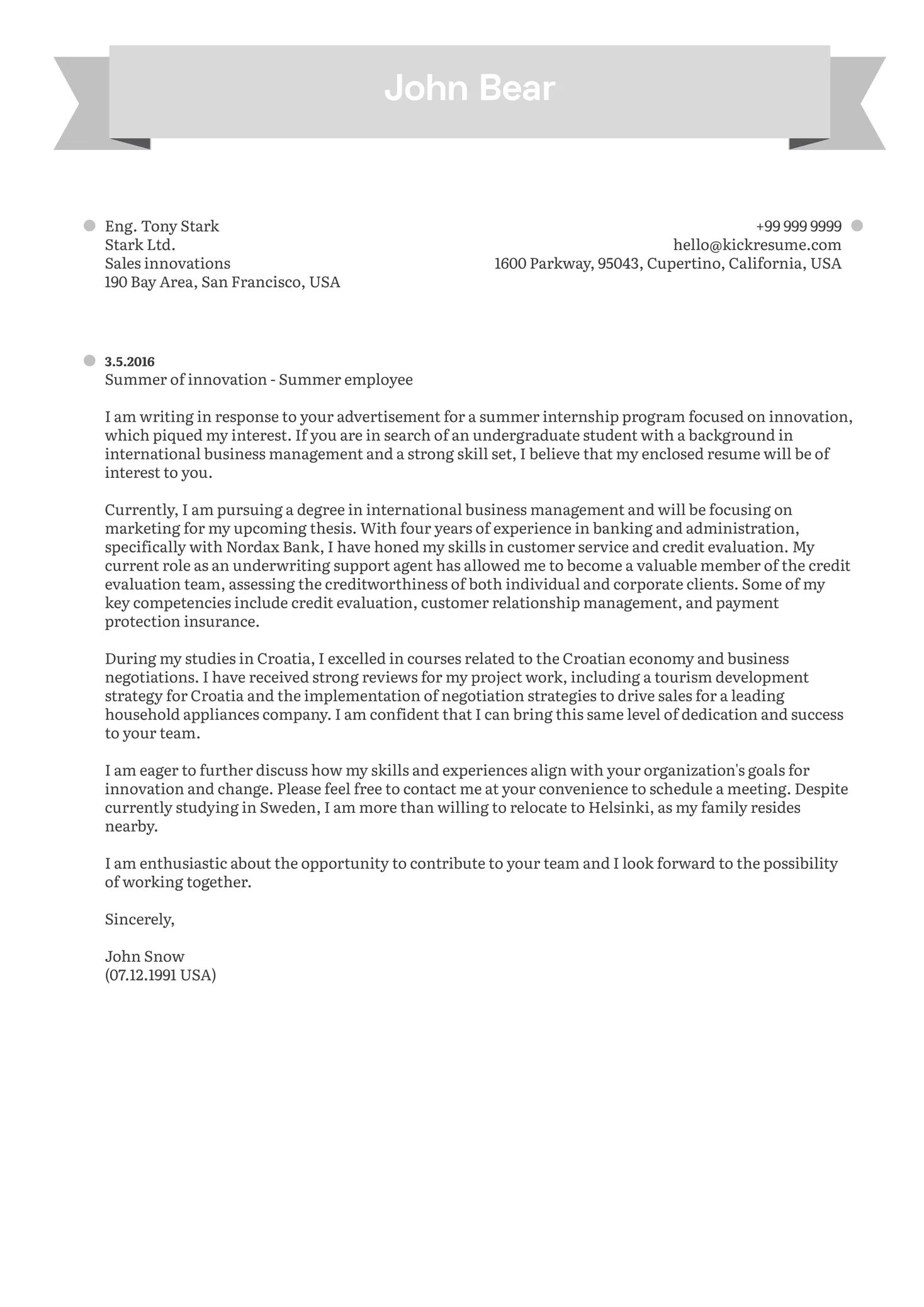
One of the core components of a hard working cover letter is the effective presentation of your skills and experiences. Avoid generic statements. Instead, provide specific examples of how you’ve utilized your skills in previous roles and what positive outcomes you achieved. For each skill or experience you mention, try to quantify your achievements whenever possible. For instance, instead of saying ‘Managed social media campaigns,’ you could say ‘Increased social media engagement by 30% within six months by implementing a new content strategy.’ This concrete evidence validates your claims and demonstrates the value you bring to the table. When selecting which skills and experiences to highlight, refer directly to the job description. Ensure that the information you present aligns with the key requirements listed by the employer.
Researching the Company and Position
A fundamental aspect of a hard working cover letter is the in-depth research you conduct on the company and the specific position you’re applying for. This research allows you to personalize your cover letter, which demonstrates genuine interest and understanding of the company’s needs. Begin by visiting the company’s website, exploring their ‘About Us’ section, and reading any recent press releases or news articles related to the company. This will provide you with insights into their mission, values, current projects, and future goals. Understanding the company culture is also critical. Look at their social media presence to get a feel for their workplace environment and employee interactions. Tailoring your cover letter to the information obtained through research shows initiative.
Tailoring Your Cover Letter to the Job Description
Tailoring your cover letter to match the job description is a vital step in creating a hard working cover letter. The job description serves as a blueprint for what the employer is looking for in a candidate, highlighting the necessary skills, experiences, and qualities. Carefully review the job description and identify the key requirements and qualifications. Then, craft your cover letter to specifically address each of these points. Use the same keywords and phrases as used in the job description but ensure that your writing remains authentic and reflects your personal style. Explain how your skills and experiences align with these specific requirements. Whenever possible, provide examples of how you have successfully demonstrated these skills in previous roles. This will make your cover letter more engaging and relevant.
Using Keywords Effectively
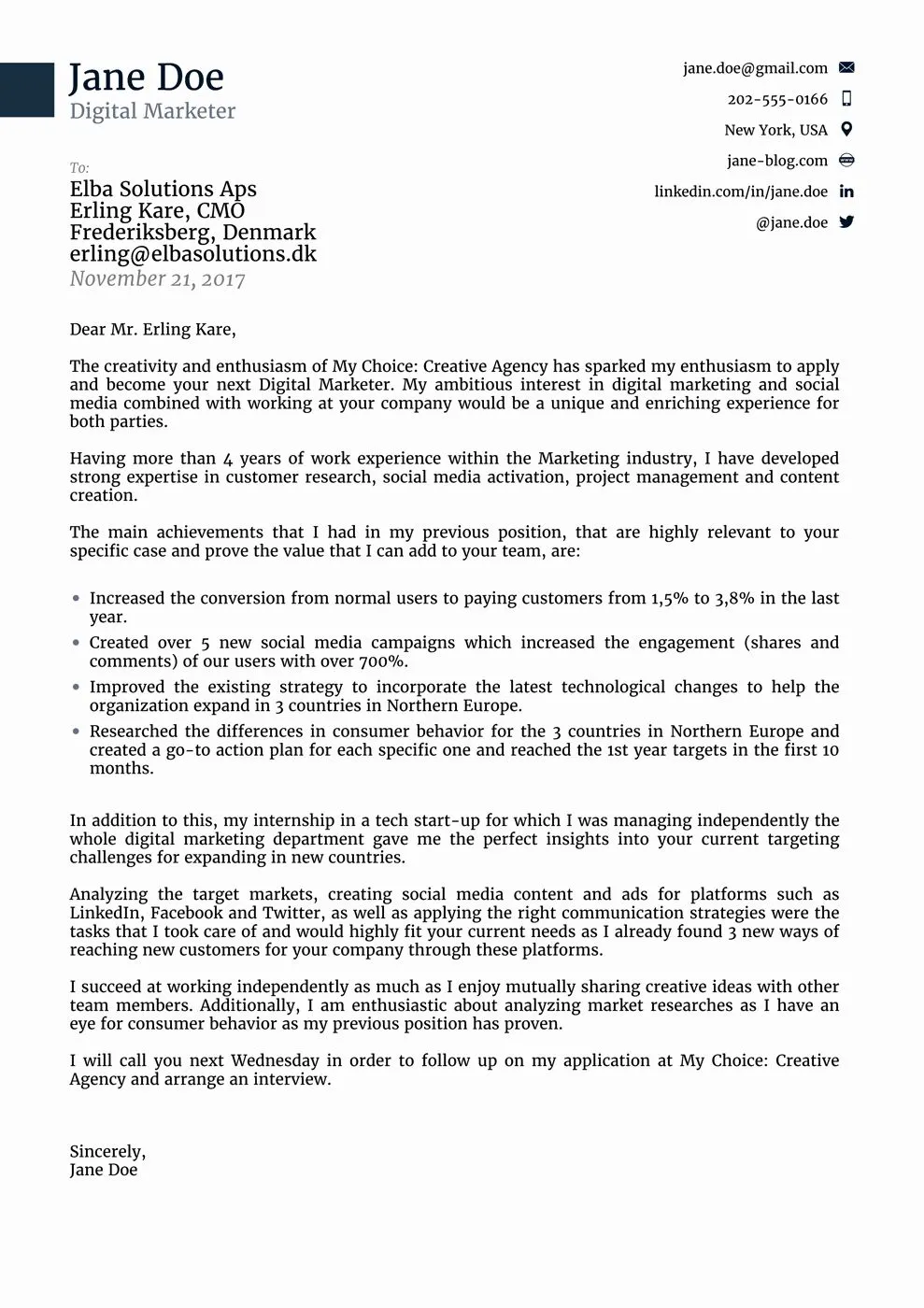
Incorporating relevant keywords from the job description into your cover letter is crucial for demonstrating that you possess the qualifications the employer is seeking. However, avoid keyword stuffing, which can make your cover letter sound unnatural and clunky. Instead, strategically weave relevant keywords throughout your document in a way that feels organic and integrated into your sentences. Focus on using keywords that directly reflect the skills, experiences, and qualities the employer emphasizes in the job description. When mentioning your skills, use the same terminology that the employer uses. For instance, if the job description specifies ‘project management,’ make sure to use that term in your cover letter, rather than a synonym. Keep your language clear and concise, making it easy for the reader to identify the keywords and understand your qualifications.
Showcasing Your Achievements
A hard working cover letter is an opportunity to highlight your achievements and showcase the value you would bring to the position. Instead of simply listing your responsibilities in previous roles, focus on quantifying your accomplishments and the impact you made. Use action verbs to describe what you achieved. Provide specific examples of how you’ve exceeded expectations, solved problems, or contributed to the success of previous employers. Whenever possible, include data and metrics to support your claims. For example, instead of saying ‘Managed customer service inquiries,’ you could say ‘Reduced customer response time by 20% by implementing a new ticketing system.’ Your achievements should directly align with the requirements and objectives of the job you are applying for. This will allow the hiring manager to envision your potential contributions to their team.
Structuring Your Hard Working Cover Letter
The structure of your cover letter plays a crucial role in ensuring it is readable and conveys your message effectively. A well-structured cover letter is easy for the hiring manager to follow and helps to highlight the key points of your qualifications. The standard structure includes a header with your contact information, a greeting, an introductory paragraph, body paragraphs that detail your skills and experiences, a closing paragraph, and a professional sign-off. Each section should serve a specific purpose. The header establishes your contact information, the greeting personalizes your approach, the introduction grabs the reader’s attention, and the body paragraphs expand on your qualifications. The closing paragraph summarizes your interest in the position and provides a call to action.
Header and Contact Information
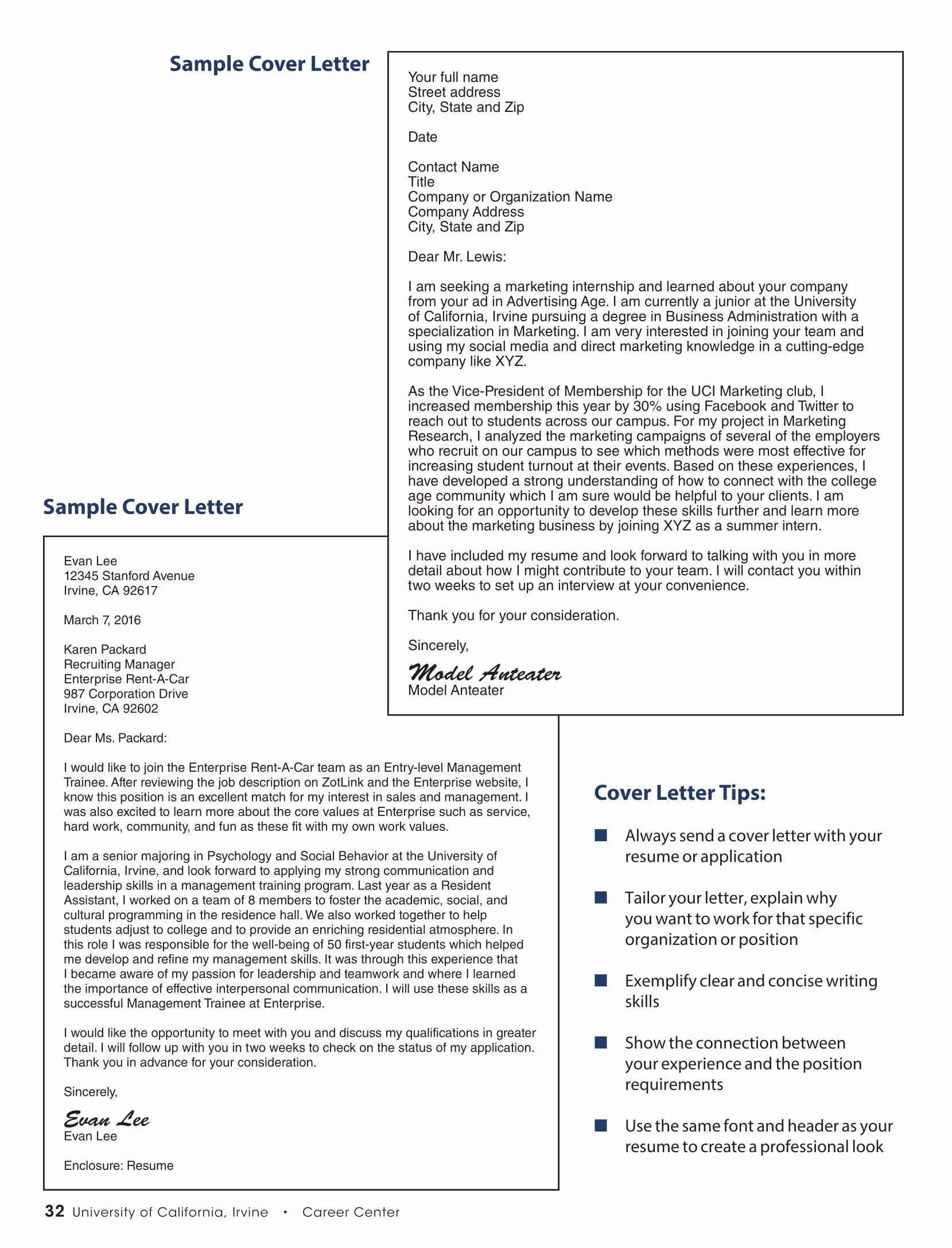
Start your hard working cover letter with a header containing your contact information. Include your full name, address, phone number, and email address. Ensure that your contact information is accurate and up-to-date. Also, include the date and the hiring manager’s name and title, if known. If you cannot find the hiring manager’s name, use a general salutation, such as ‘Dear Hiring Manager.’ Using the correct format for your header is a sign of professionalism and attention to detail. This establishes that you are serious about the job application.
Greeting and Opening Paragraph
The greeting and opening paragraph set the tone for the rest of your cover letter, making it an important element of a hard working cover letter. Address the hiring manager by name if you know it; otherwise, use a professional salutation such as ‘Dear Hiring Manager.’ In the opening paragraph, clearly state the position you’re applying for and where you saw the job posting. Briefly mention what attracted you to the position and the company. Your opening paragraph should be concise and engaging, designed to capture the reader’s attention. It should create a positive first impression and encourage them to continue reading. Demonstrate your enthusiasm for the opportunity and indicate why you are a suitable candidate. Make sure that your opening is tailored to the specific job and company.
Body Paragraphs
The body paragraphs are where you provide the main content of your hard working cover letter, detailing your skills, experiences, and qualifications in relation to the job requirements. Organize your paragraphs logically, using a clear and concise writing style. Each paragraph should focus on a specific aspect of your qualifications. Link your experiences and skills to the key requirements of the job description. Use examples and data to support your claims and quantify your achievements whenever possible. Tailor your writing to fit the company’s culture and demonstrate your understanding of their needs and values. The body paragraphs are the heart of your cover letter, so make sure they effectively present your case for why you are the ideal candidate. Make sure they are well-written, engaging, and relevant to the specific job.
Call to Action and Closing
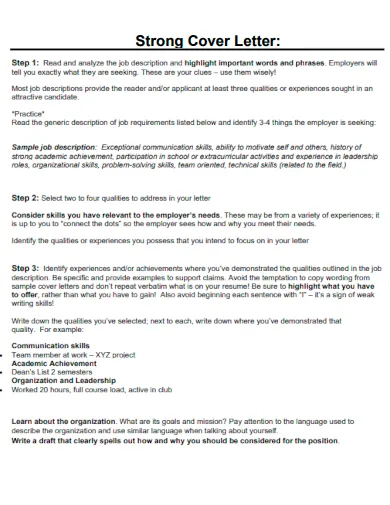
The closing paragraph of your hard working cover letter should include a clear call to action and a professional sign-off. Express your interest in the position once again and thank the hiring manager for their time and consideration. Clearly state your availability for an interview and express your willingness to provide further information. Use a professional closing, such as ‘Sincerely’ or ‘Best regards,’ followed by your typed name. Proofread the entire cover letter one last time before submitting it to ensure there are no errors. This conclusion summarizes your interest in the opportunity and sets the stage for the next step in the hiring process.
Proofreading and Editing Your Cover Letter
Proofreading and editing are essential steps in creating a hard working cover letter. Errors can undermine your credibility and leave a negative impression on the hiring manager. Take the time to carefully review your cover letter for any typos, grammatical errors, or awkward phrasing. Read your cover letter aloud to identify any areas where the writing may sound unclear or confusing. Ask a friend, family member, or career advisor to review your cover letter and provide feedback. They may be able to catch mistakes that you have missed and suggest improvements. Pay attention to the overall flow and structure of your cover letter, ensuring that it is easy to read and the content is organized in a logical manner. Review it multiple times.
Ensuring Clarity, Conciseness, and Professionalism
A hard working cover letter should be clear, concise, and professional in its language and tone. Use simple, direct language and avoid jargon or overly complex sentences. Get your points across efficiently and avoid unnecessary wordiness. Keep your paragraphs relatively short and easy to read. Use a professional tone throughout the cover letter. Avoid slang, colloquialisms, or overly casual language. Maintain a positive and enthusiastic attitude. Ensure that your cover letter reflects your professionalism and attention to detail. Consider the overall design and formatting of your cover letter. Choose a clean and easy-to-read font, such as Arial or Times New Roman, and use consistent formatting throughout the document. Use proper grammar and punctuation, and proofread carefully to avoid any errors.
Common Mistakes to Avoid in a Hard Working Cover Letter
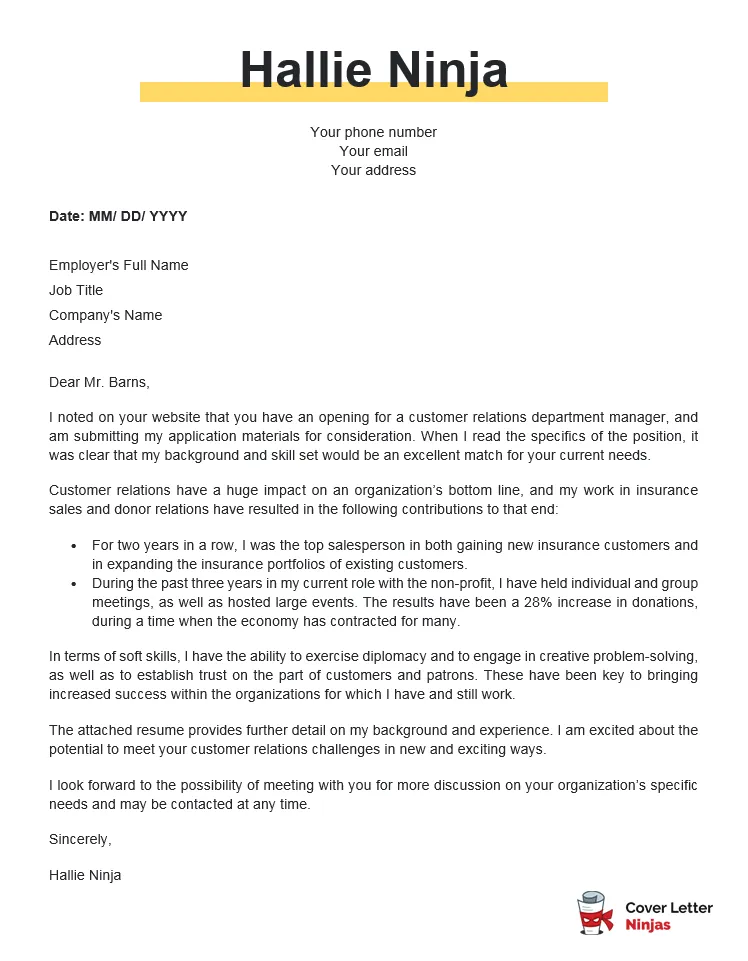
Avoid common mistakes to ensure your hard working cover letter stands out for the right reasons. One of the biggest pitfalls is submitting a generic cover letter that is not tailored to the specific job and company. Generic cover letters lack the personal touch and can give the impression that the applicant has not put in the effort to research the position. Another frequent error is including typos or grammatical errors. Proofreading your cover letter meticulously before submitting it can help to prevent these mistakes. Finally, avoid a lack of enthusiasm. A hard working cover letter should demonstrate your genuine interest in the position and the company.
Generic Cover Letters
Submitting a generic cover letter is one of the most common and detrimental mistakes you can make. A generic cover letter is one that is not tailored to the specific job or company. It’s a sign of a lack of effort and can make it appear that the applicant is applying for any job, rather than this particular one. The hiring manager will instantly recognize a generic cover letter and likely discard it. Take the time to research the company and the specific position and tailor the letter to the job description. This shows that you have a genuine interest in the position and are willing to put in the necessary effort. Make sure that your qualifications and experiences align with the requirements outlined in the job description. Highlight how your skills match the requirements.
Typos and Grammatical Errors
Typos and grammatical errors can significantly diminish the impact of your hard working cover letter and create a negative impression on the hiring manager. These errors reflect poorly on your attention to detail and your commitment to quality. Always proofread your cover letter thoroughly before submitting it. Use a spell checker and a grammar checker. Read your cover letter aloud to catch any awkward phrasing or sentences. Ask a friend or family member to review your cover letter. Pay attention to the overall flow and structure. Ensuring accuracy is paramount. A cover letter riddled with mistakes suggests that you are not careful or conscientious in your work. This also creates a perception that your work will be of poor quality.
Failing to Demonstrate Enthusiasm
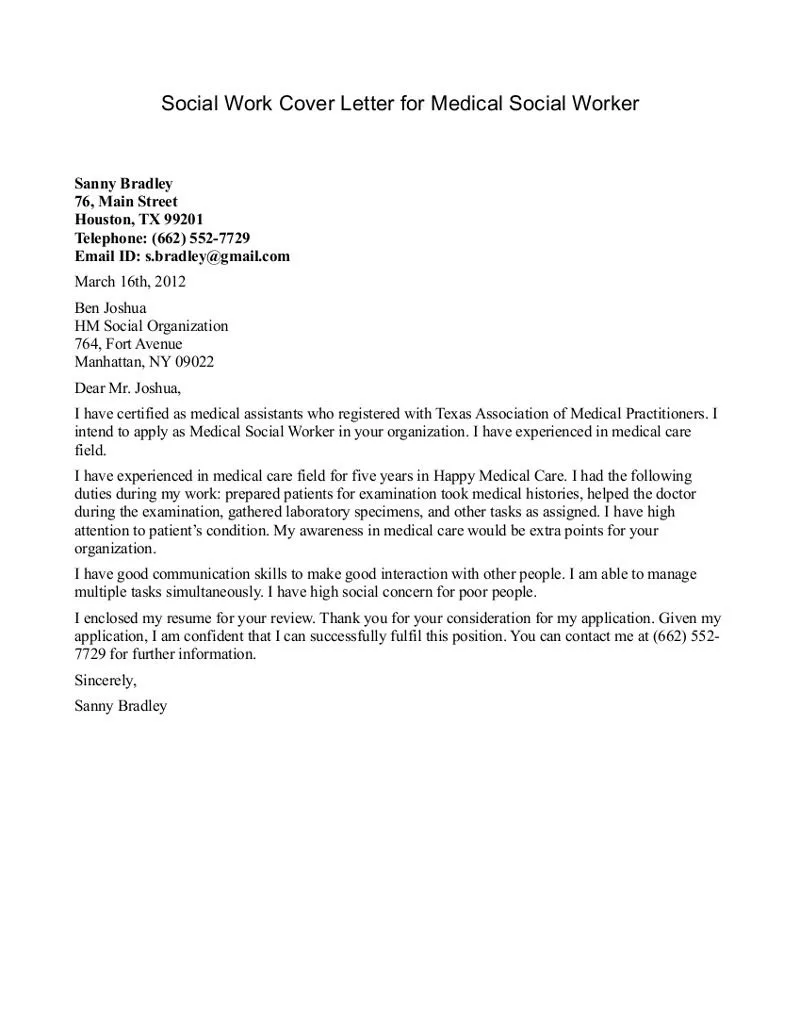
A hard working cover letter should demonstrate your genuine interest in the position and the company. Failing to show enthusiasm can make your cover letter seem impersonal and uninspired. Express your excitement about the opportunity and your eagerness to contribute to the company. Explain why you are interested in the specific role and what aspects of the company appeal to you. Highlight the value you can bring. Emphasize your skills and experiences in a way that showcases your passion for the work. A cover letter that lacks enthusiasm will often fail to capture the hiring manager’s attention and make them want to learn more about you.
Hard Working Cover Letter Examples
Reviewing examples of effective cover letters can provide valuable insights into how to structure and write your own. By studying well-written cover letters, you can learn how to effectively highlight your skills, experiences, and qualifications, how to tailor your writing to the specific job description, and how to showcase your enthusiasm for the position. Adapt the format of any sample cover letter. Be aware that the best examples will vary depending on the industry, the job, and your level of experience. Use these examples as guides, but make sure your cover letter is unique and reflects your personality and experience.
Example 1 [Specific Industry or Job]
Example cover letters tailored to specific industries or job roles can give you a clear understanding of the language, structure, and content. These examples will offer insights into how to target a letter to the requirements of a specific field. These examples offer you concrete demonstrations. These examples demonstrate the best practices to show your skills and experience. Studying examples is a very effective way to gain insights into writing your own.
Example 2 [Another Industry or Job]
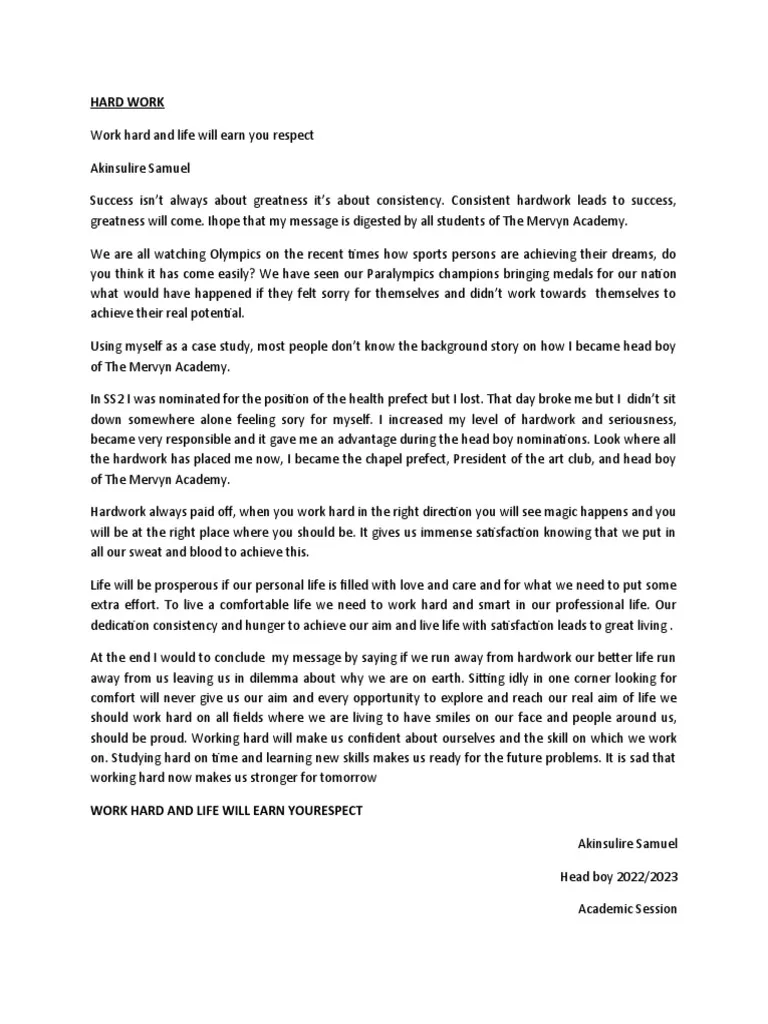
Analyzing another example helps you identify the key elements of successful cover letters. You’ll become more familiar with how to present yourself in writing. Examine the structure, the language, and the way the candidate presents their experience. Use these examples as templates to give you a sense of what your finished document should look like. These examples also showcase how to tailor your letter to the specific needs of each industry and job role, using the right keywords, and highlighting the most relevant accomplishments.
Final Thoughts and Next Steps
Writing a hard working cover letter requires attention to detail, thoughtful preparation, and a commitment to presenting yourself in the best possible light. By following the strategies and guidelines outlined in this guide, you can craft a cover letter that not only showcases your qualifications but also demonstrates your genuine interest in the position and the company. Always proofread and edit before you submit your cover letter. The next step is to submit your cover letter and resume. Good luck.
